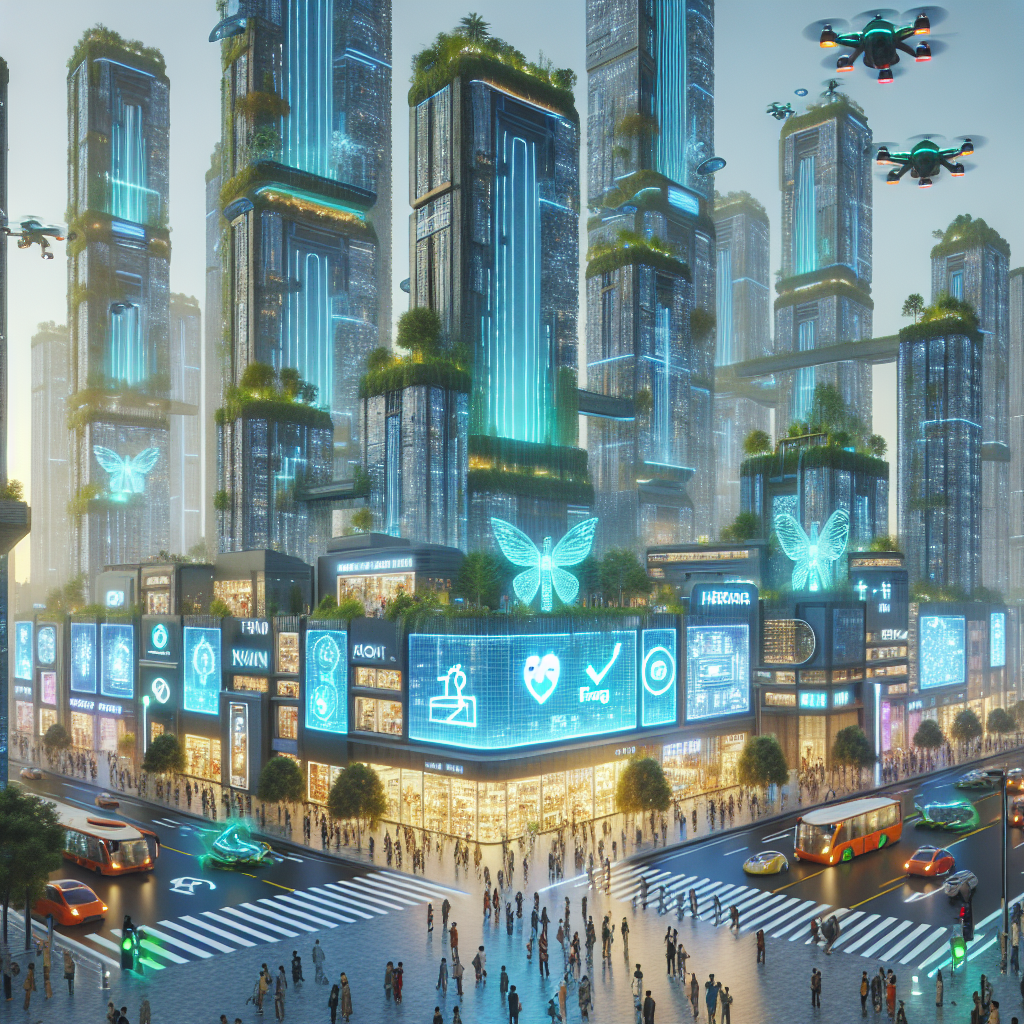The Future of AI in Retail and Commercial Architecture
Artificial Intelligence (AI) has already started to revolutionize various industries, and the retail and commercial architecture sectors are no exception. AI technologies are being integrated into retail stores and commercial buildings to enhance customer experiences, optimize operations, and improve efficiency. From smart shelves and cashier-less stores to personalized shopping experiences and predictive maintenance, AI is reshaping the way we shop and interact with commercial spaces.
This article will explore the current trends and future possibilities of AI in retail and commercial architecture, including how AI is being used to create immersive and personalized shopping experiences, optimize supply chain management, and enhance building design and maintenance.
Immersive Shopping Experiences
One of the most significant impacts of AI in retail and commercial architecture is the creation of immersive and personalized shopping experiences. AI-powered technologies such as facial recognition, virtual reality, and augmented reality are being used to create interactive and engaging shopping environments that cater to individual preferences and needs.
For example, some retail stores are using facial recognition technology to identify customers as they enter the store and provide personalized product recommendations based on their previous purchases and browsing history. Virtual and augmented reality technologies are also being used to create virtual fitting rooms and interactive product displays that allow customers to visualize products in different settings and try them on virtually before making a purchase.
These immersive shopping experiences not only enhance customer engagement and satisfaction but also help retailers gather valuable data about customer preferences and behavior, which can be used to optimize product offerings and marketing strategies.
Optimized Supply Chain Management
AI is also revolutionizing supply chain management in the retail and commercial architecture sectors. AI-powered algorithms are being used to analyze and forecast demand, optimize inventory levels, and streamline logistics operations. By leveraging AI technologies, retailers and commercial building owners can reduce costs, improve efficiency, and ensure seamless operations.
For example, AI-powered demand forecasting algorithms can analyze historical sales data, market trends, and external factors such as weather patterns to predict future demand with greater accuracy. This allows retailers to optimize inventory levels, reduce stockouts, and minimize overstocking, ultimately leading to cost savings and improved customer satisfaction.
AI is also being used to optimize logistics operations by automating route planning, scheduling deliveries, and monitoring inventory levels in real-time. By leveraging AI-powered systems, retailers and commercial building owners can streamline their supply chain processes, reduce transportation costs, and ensure timely deliveries to customers.
Enhanced Building Design and Maintenance
In the realm of commercial architecture, AI is being used to enhance building design and maintenance processes. AI-powered design tools can analyze building layouts, optimize space utilization, and suggest energy-efficient solutions to reduce operational costs and environmental impact.
AI is also being used to monitor building systems, such as HVAC, lighting, and security, in real-time to identify potential issues and predict maintenance needs before they escalate into costly repairs. By implementing AI-powered predictive maintenance systems, commercial building owners can reduce downtime, extend the lifespan of building equipment, and lower maintenance costs.
Furthermore, AI technologies are being used to create smart buildings that can adapt to occupants’ preferences and behavior. For example, AI-powered systems can adjust lighting and temperature settings based on occupancy levels, optimize energy usage, and improve overall comfort and productivity for building occupants.
FAQs
Q: How is AI being used to personalize shopping experiences in retail stores?
A: AI technologies such as facial recognition and virtual reality are being used to create personalized shopping experiences in retail stores. Facial recognition technology can identify customers as they enter the store and provide personalized product recommendations based on their previous purchases and browsing history. Virtual reality technology is being used to create virtual fitting rooms and interactive product displays that allow customers to visualize products in different settings and try them on virtually before making a purchase.
Q: How is AI revolutionizing supply chain management in the retail sector?
A: AI-powered algorithms are being used to analyze and forecast demand, optimize inventory levels, and streamline logistics operations in the retail sector. By leveraging AI technologies, retailers can reduce costs, improve efficiency, and ensure seamless operations. AI-powered demand forecasting algorithms can analyze historical sales data, market trends, and external factors to predict future demand with greater accuracy. AI is also being used to optimize logistics operations by automating route planning, scheduling deliveries, and monitoring inventory levels in real-time.
Q: How is AI being used to enhance building design and maintenance in commercial architecture?
A: AI-powered design tools can analyze building layouts, optimize space utilization, and suggest energy-efficient solutions to reduce operational costs and environmental impact in commercial architecture. AI is also being used to monitor building systems in real-time to identify potential issues and predict maintenance needs before they escalate into costly repairs. By implementing AI-powered predictive maintenance systems, commercial building owners can reduce downtime, extend the lifespan of building equipment, and lower maintenance costs.

